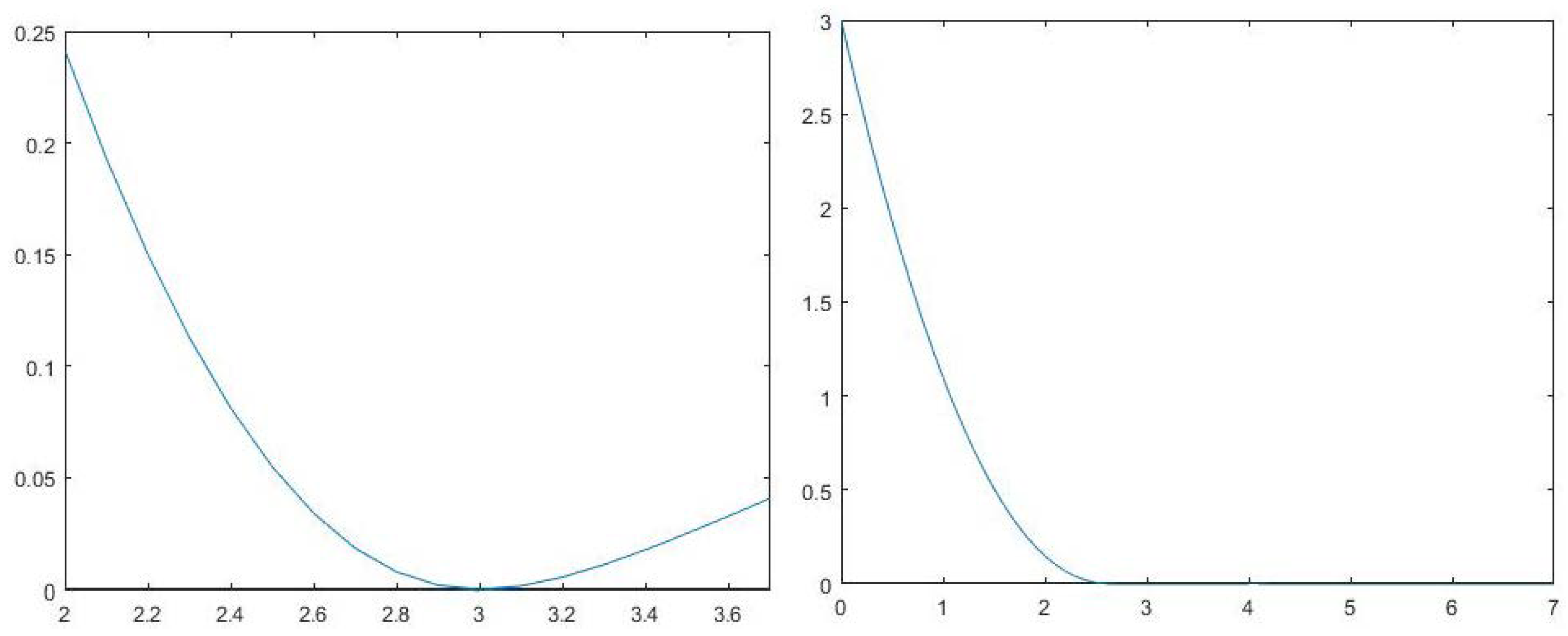A large class of datasets are naturally stored in matrix form. In many important applications, the challenge of filling a matrix from a sampling of its entries can arise; this is known as the matrix completion problem. Clearly, such a problem needs some additional constraints to be well-posed. One of its most interesting variants is to find the lower rank matrices that best fit the given data. This constrained optimization problem is known as low-rank matrix completion.
Let
be a matrix that is only known on a subset,
, of its entries. In [
1], the authors provided conditions on the sampling of observed entries, such that the problem which arises has a high probability of not being undetermined. The classical mathematical formulation for the low rank matrix completion problem is :
where
is the projection onto
defined as a function
such that
This approach may seem like the most natural to describe the problem, but it is not very useful in practice, since it is well known to be NP-hard [
2]. In [
3], the authors stated the problem as
where
is the nuclear norm of the matrix, which is the sum of its singular values. This is a convex optimization problem and the authors proved that when
is sampled uniformly at random and is sufficiently large, the previous relaxation can recover any matrix of rank
r with high probability. We will consider the following formulation as in [
4,
5],
Notice that, the projection
can be written as a Hadamard product. If we identify the subset
of the fixed entries with the matrix
such that
it is clear that
. By considering the manifold
we can write the problem as
This approach is based on the assumption of knowing in advance the rank
r of the target matrix. A key feature of the problem is that
, that translates, from a practical point of view in a small increase of the cost to eventually update
r. In [
6] is well explained the possibility of estimating the rank (unknown a priori) based on the gap between singular values of the “trimmed” partial target matrix
M. Furthermore, the authors highlight that in collaborative filtering applications,
r ranged between 10 and 30. In [
4], the author employed optimization techniques widely exploiting the structure of smooth Riemaniann manifold of
. The same tools are used in [
5], where the authors considered the matrix completion in the presence of outliers. In the recent work [
7], the authors provide a non convex relaxation approach for matrix completion in presence of non Gaussian noise and or outliers, by employing the correntropy induced losses. In [
8], the authors survey on the literature on matrix completions and deal with target matrices, whose entries are affected by a small amount of noise. Recently, the problem became popular thanks to collaborative filtering applications [
9,
10] and the Netflix problem [
11]. It can also be employed in other fields of practical applications such as sensor network localization [
12], signal processing [
13] and reconstruction of damaged images [
14]. A very suggestive use of modeling as low rank matrix completion problem has been done in biomathmatics area, as shown in [
15] for gene-disease associations. Applications to minimal representation of discrete systems can be considered as of more mathematical feature [
16]. What makes the problem interesting are not just the multiple applications, but also its variants, such as, for example, structured [
17] and Euclidean distance matrix cases [
18]. In this paper a numerical technique to solve the low rank matrix completion problem is provided, which makes use of a gradient system of matrix ODEs.







